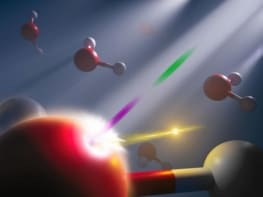Ball lightning - a slow-moving ball of light that is occasionally seen at ground level during thunderstorms - has puzzled scientists for centuries. There have also been reports of ball lightning in aircraft, but the origins of this phenomenon have remained a mystery. Now John Gilman of the University of California at Los Angeles has suggested that one of the properties of ball lightning - the cohesion that keeps the ball together for periods of tens of seconds - can be explained in terms of Rydberg atoms (J Gilman 2003 Appl. Phys. Lett. 83 2283). However, other researchers in the field disagree.

It is generally believed that ball lightning is a ball of plasma, and some scientists believe that it is similar to the highly luminous plasma disks that are formed when explosives are detonated. The ball can typically can measure 30 centimetres across. Many theories on ball lightning have been put forward over the years but none can explain all of the characteristics observed. “A good theory should also be able to account for the generation of the ball lightning, the constant light output for about one second at about the 60 watt level, the colour – usually red or yellow – and a variety of other factors,” says Martin Uman of the University of Florida. None of the existing theories – including Gilman’s – can do this, says Uman.
Gilman suggests that the plasma ball has a very low density – comparable with the density of air – and is made up of Rydberg atoms. These are atoms whose valence electron has been excited into an orbital with a very high quantum number. He calculates that the radius of such an orbital could be as large as a few centimetres, and that the average atom would thus have a very large polarizability. Attractive Van der Waals interactions – which increase as the polarizability of atoms increase – could then be responsible for the cohesion between the atoms. He computes a value for the cohesive energy per atom to be about one hundredth that of a metal.
John Abrahamson, who works on ball lightning at the University of Canterbury in New Zealand, says that Gilman’s model is “imaginative” but adds that “it does not seem workable for several reasons”. Abrahamson says that the Rydberg model requires each electron to be separated from its nucleus by a distance of several centimetres. “This is a huge distance for atomic orbitals,” he told PhysicsWeb. In 2002 Abrahamson and co-worker, James Dinniss, suggested that ball lightning occurs when silicon is oxidized in the atmosphere following a lightning strike.



